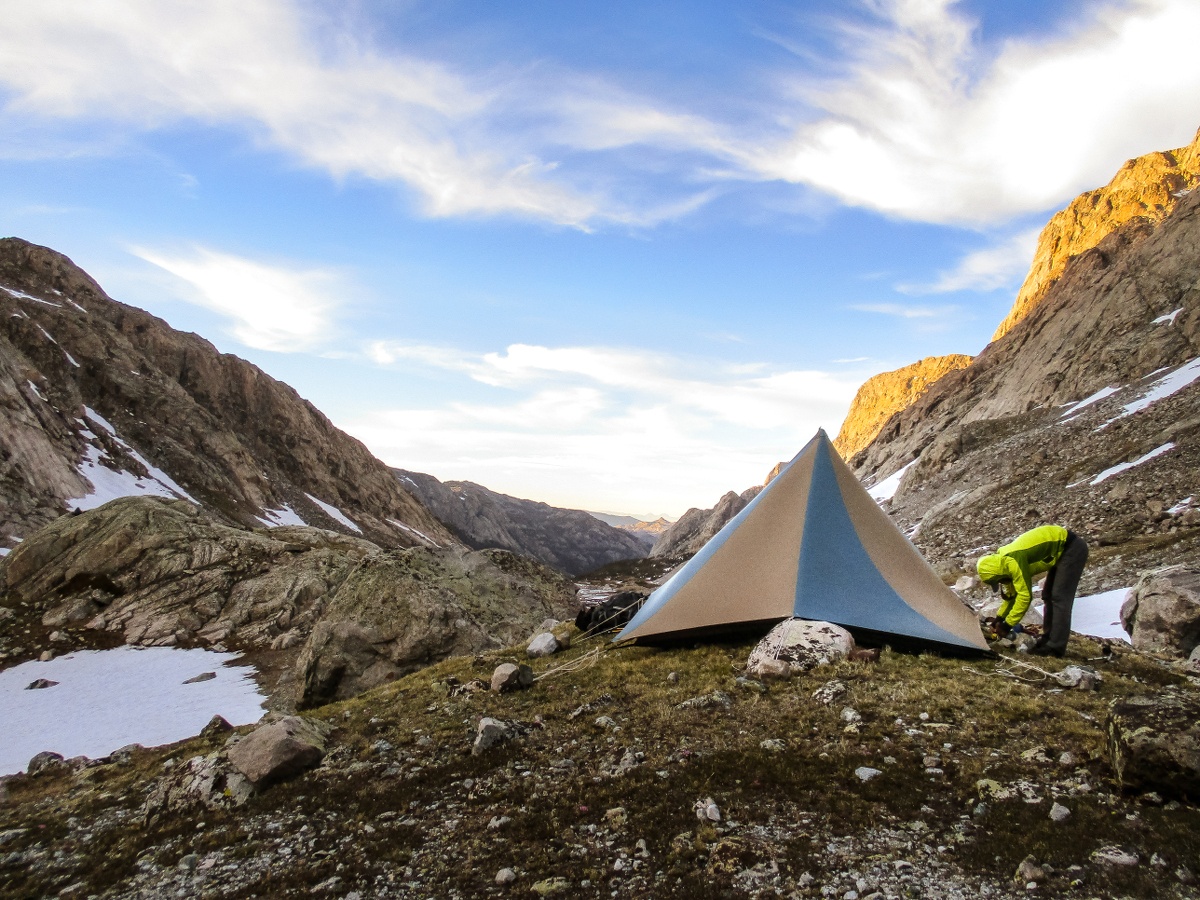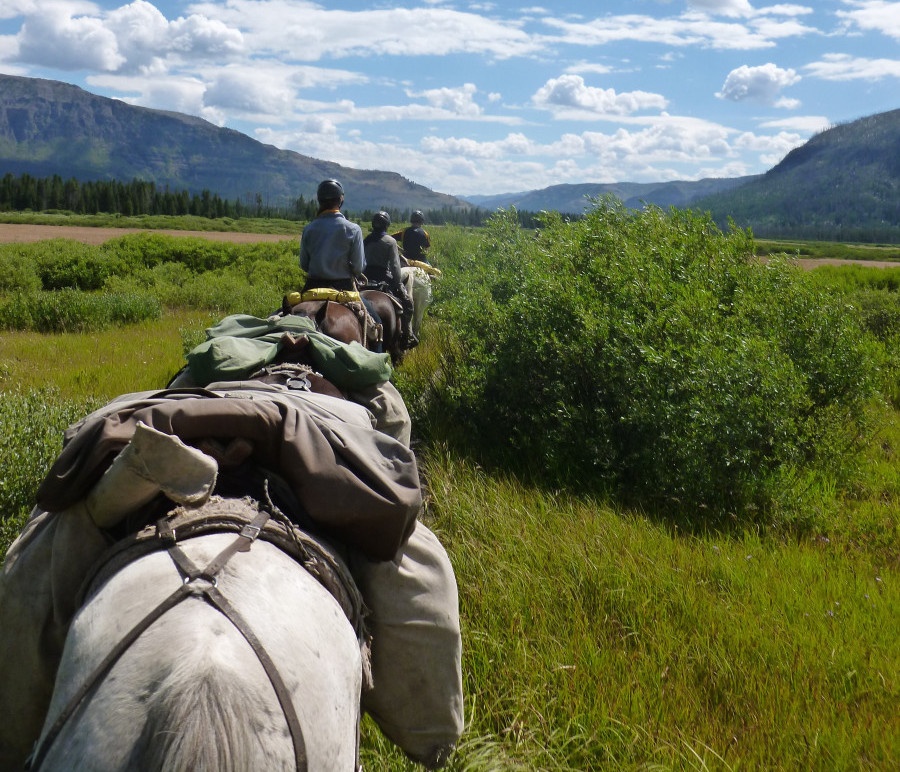The Setting
Editor’s Note: This case study was updated in 2024.
You are on a Search and Rescue (SAR) team of Wilderness First Responders (WFR) hiking the rugged Bear’s Ears Trail into the Wind River Range looking into a vague report of a “very sick person” camped “near the trail near tree line”. The report came in at midnight. Your team’s role is to sweep this trail in the dark in the hopes of finding out exactly what is going on. A second group is gathering to hike up the trail later in support.
After 8 miles of strenuous uphill walking you see a poorly pitched tent off the trail at 11,300 ft. The first rosy fingers of dawn reach across the Wind River basin from the east.
“Hello, is anyone in the tent? This is search and rescue. We have a report of someone who needs assistance?”
The silence and a distinct smell of vomit prompt you to look into the tent. You see a person curled in a sleeping bag, appearing pale and sickly. They open their eyes when you ask “Hello, can I help?” They seemed confused but gave consent and tell you their name.

Photo by Ashley Wise
SOAP Report
Subjective
We found a 52 year old female who is lethargic with altered mental status. She apparently hiked up here yesterday afternoon and was too ill and fatigued to continue. Her companions continued on with a vague plan to return if she did not arrive at their planned destination lake. The patient is currently A&O x 2.
Objective
The patient denies any recent trauma. Head to toe findings are negative other than some minor scrapes and bruises on her lower legs. Listening with a stethoscope, her lungs are clear bilaterally. She can stand with assistance and walk slowly and wobbly.
Vital Signs
|
Time |
5:00 a.m. |
|
Level of Responsiveness (LOR) |
A+Ox2 |
|
Heart Rate (HR) |
90, strong, regular |
|
Respiratory Rate (RR) |
22, regular, easy |
|
Skin Color, Temperature, Moisture (SCTM) |
Pale, warm, dry |
|
Blood Pressure (BP) |
150/94 |
|
Pupils |
PERRL |
|
Temperature (T°) |
99°F (37.2°C) oral |
|
Blood Sugar |
“High” reading on glucometer. |
History
|
Symptoms: |
Weakness, lethargy, nausea. She denies headache, shortness of breath, chest pain, abdominal pain, or painful urination. She is not consistently oriented to place and time and requires multiple questions to elicit her medical history and recent events. |
|
Allergies: |
Denies. |
|
Medications: |
We found multiple medications prescribed to this patient; simvastatin (for cholesterol), captopril (for blood pressure) and insulin (for diabetes). We are unable to determine when she last took any of these. She states she needs to take insulin and to try to eat. |
|
Pertinent Hx: |
This is unclear and unreliable. Patient does report a history of diabetes and a recent urinary tract infection. |
|
Last in/out: |
She says she has been drinking water however there is no water at this location and her water bottles are empty. It appears she has vomited several times. Patient denies diarrhea and there is no evidence of diarrhea. She urinated dark smelly urine once in our presence. |
|
Events: |
We think this patient, who apparently lives at sea level, hiked 8 miles and up 3000 feet to this location yesterday. She became fatigued and decided to stop for the night. Her companions continued on. |
Pause Here
What is your assessment and plan? Take a few minutes to figure out your own assessment and make a plan. Don’t cheat—no reading on without answering this first!

Photo by Will Harrison
Assessment
- Hyperglycemia (high blood sugar)
- Altitude illness
- Dehydration
- Gastrointestinal illness with vomiting
Plan
- Request helicopter evacuation
- Use the second SAR team to move the patient to a helicopter landing zone
- Monitor the patient, allow her to drink water.
Anticipated Problems
- Patient’s condition worsens.
- Helicopter is unavailable and litter evacuation will be needed, which means requesting additional Advanced Life Support (ALS).
Comments
We expect to see this scenario in the urban context, not on the side of a wilderness trail, yet people do hike into the wilderness carrying their medical history along with their backpack.
The WFR’s role is to perform a thorough patient assessment (PAS), identify immediate life threats (there are none present), identify pertinent medical interventions and treatments (in this case oral fluids only) and determine the need for and urgency of evacuation (which needs to be done promptly due to the apparent hyperglycemia and her altered mental status).
The patient has multiple ongoing medical conditions that the WFR can identify, but for which there are no interventions in the WFR’s scope of practice other than monitoring, oral fluids, and evacuation.
The apparent hyperglycemia appears to be the most urgent problem. The WFR, unsure if the patient can make a good decision about her insulin dose, asked her to wait until she saw the doctor. The patient agreed.
Altitude illness is also on the problem list. The lungs are clear and there is no respiratory distress. A heel-to-toe walking test might have suggested high altitude cerebral edema, but the patient was unsteady and the test would be unclear as to whether the results were HACE or the underlying medical problem.
The Tale Continues
When the second team arrives, the patient is packaged in a litter and carried a few hundred yards to the LZ. Luck is on our side this day and the life flight arrived promptly. She indeed was hyperglycemic and had a history of cardiovascular disease. She spent several days in the hospital. Her companions hiked out the day after her evacuation and reported her missing. We think she needs different companions, but giving her that advice is not in our WFR scope of practice.
- Wilderness First Responder
- First Aid
- Altitude Illness
- Case Studies
- Wilderness Medicine
- Illness & Injuries
Written By
Gates Richards
Gates Richards has been involved in outdoor education and EMS since the early '90s. Over the years he's worked outdoor programming throughout the Rockies, Pacific Northwest and Alaska. He's worked urban EMS in DC, WA, CO and WY. Gates began teaching for NOLS Wilderness Medicine in 1998 and has been awarded the Wilderness Medical Society's Warren Bowman award for contributions to wilderness medicine by a non-physician as well as the National Collegiate EMS Foundation's Distinguished Service Award. He was the former Associate Director and is currently a NOLS Wilderness Medicine Faculty member.




